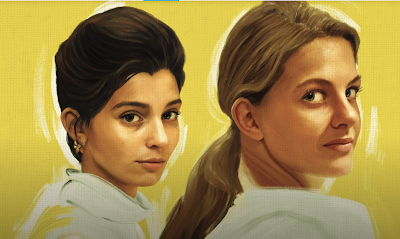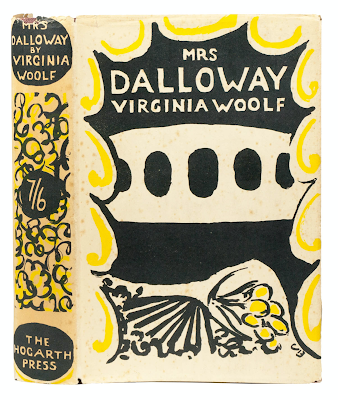First Edition, 1944
We have a tradition of reading books filled with rollicking fun every so often. Joyce Cary, who started out to make a career in art before he switched to writing, has left this portrait of an artist as a blithe spirit making his way through London untroubled by the norms of art or society.
He is committed to his vision of art and pursues it relentlessly, often ending in absurd situations, dogged by ill-luck and the police. Reduced from the renown of a moderately well-known artist who was collected by the famous, he is now in penury, having to cadge a few shillings to buy paints. A fresh canvas is now a luxury and he has to resort to a palimpsest, effacing an old painting to cover it anew with his latest vision.
Yet his response to neglect is wit:
Walls have been my salvation.... Walls and losing my teeth young, which prevented me from biting bus conductors and other idealists.
Joyce Cary once wrote about the character he created: “Jimson, as an original artist, is always going over the top ... and knows that he will probably get nothing for his pains and enterprise but a bee-swarm of bullets, death in frustration, and an unmarked grave. He makes a joke of life because he dare not take it seriously.”
For all his waywardness Gulley Jimson has his epiphanies. Quotes and comments on a dozen poems from William Blake, who was the visionary print-maker and poet of the Romantic Poets era, dot the text. Blake is a companion wanderer of Jimson through the novel. There are lines from an early lyric, Infant Joy, and quotes from the late Prophetic Books, Milton and Jerusalem. Some are short like the phrase the “starry wheels”(from Jerusalem); there are more than thirty taken from Visions of the Daughters of Albion and forty-eight dispersed lines from Milton, and twenty-six stanzas of The Mental Traveller. (See https://www.jstor.org/stable/24780427 Joyce Cary's Blake: The intertextuality of The Horse's Mouth by Annette Shandler Levitt). Levitt maintains that “One could describe The Horse's Mouth as a mosaic of richly varied tesserae representing the interlocking worlds of Gulley Jimson and William Blake.”
It is never resolved whether Gulley Jimson was a great artist unappreciated in his time like a van Gogh, or a footnote in the history fo English art. It does not matter, for when we collide with the sheer force of will and creative frenzy of Jimson we are wholly swept up by the mad urgency of his impulses and imagine we are in the presence of the creative act. That is Joyce Cary's art.
Jimson‘s mind is a restless cauldron of painterly images:
An evening by Randipole Billy. Green lily sky, orange flames over the West. Long flat clouds like copper angels with brass hair floating on the curls of the fire. River mint green and blood orange. Old man lying along the water with a green beard, one arm under head, face twisted up—vision of Thames among the pot-houses. I could use that, I thought—that blunt round shape like a copper St. Paul’s with a squeeze in the middle—like a teat with a long end.
...
I had a good view … of the sky, through the top of the window, and the sky was like a cinema film gone mad. Great whirling heads and arms and noses, naked legs and trousered bottoms, guns, swords and top hats, rushing past all night. Sometimes you saw a lovely lady in a pose plastique, but before you could wink she had swelled out like a balloon, lost her leg or her head, and turned into an ammunition wagon galloping over the corpses.
As Jack Stewart in his study of five authors, Colour, Space and Creativity, notes: “For Gulley Jimson, the creative process is a life-affirming ritual and if he does not have paints and brushes handy, he pursues it in words. Through the artist's reflections of the Thames Embankment, Joyce Cary dramatises painterly ways of seeing the world.”
Jimson has a unique response to the scrapes he gets into. A street vendor thumps him while Jimson is trying to sell a few cards. “Then he kicked me up and kicked me down; kicked me in the guts and kicked me on the jaw; kicked me into the road and danced on me three or four times. His feet moved so fast one couldn’t see them.” When Jimson totes up the damage it is extensive: “When they put me to bed they found I had a broken nose, a broken arm, a broken collar bone, four broken ribs, three broken fingers, three or or four square yards of serious contusions and a double rupture.” But his reaction is summed up by this soliloquy:
I was so angry that I might have done myself a serious injury, if I hadn’t said to myself, Hold on, Gulley. Don’t lose your presence of imagination. Wash out that blackguard till you’re well again and get a new pair of boots. With nails in them. Forgive and forget. Till you have him set. Remember that he had a certain amount of excuse for his actions. Give him his due, but not till you are ready with a crowbar. Don’t get spiteful. Keep cool. It’s the only way to handle a snake like that.
Jimson is always beginning – “It's a new world with every heartbeat,” he remarks. It does not seem to matter that the city planners have decided to raze the building on whose walls he has thrown up a new masterpiece of a fresco (The Creation). His enthusiasm cannot be contained even as doom closes in, for he is sure something great will emerge on the next attempt. Even as the author is never defeated by a blank page, the artist who looks on a blank canvas will only see visions rising up.









































